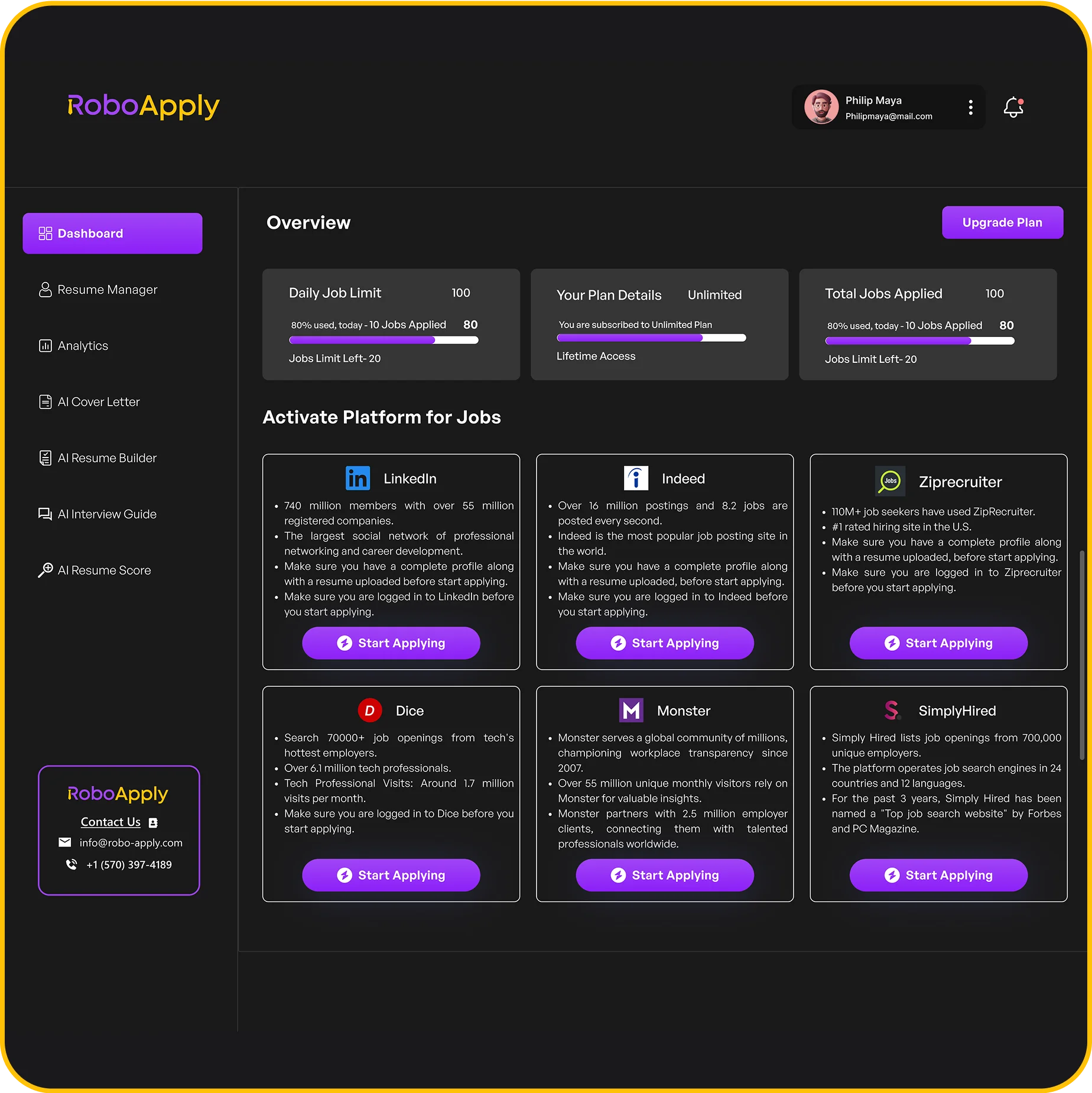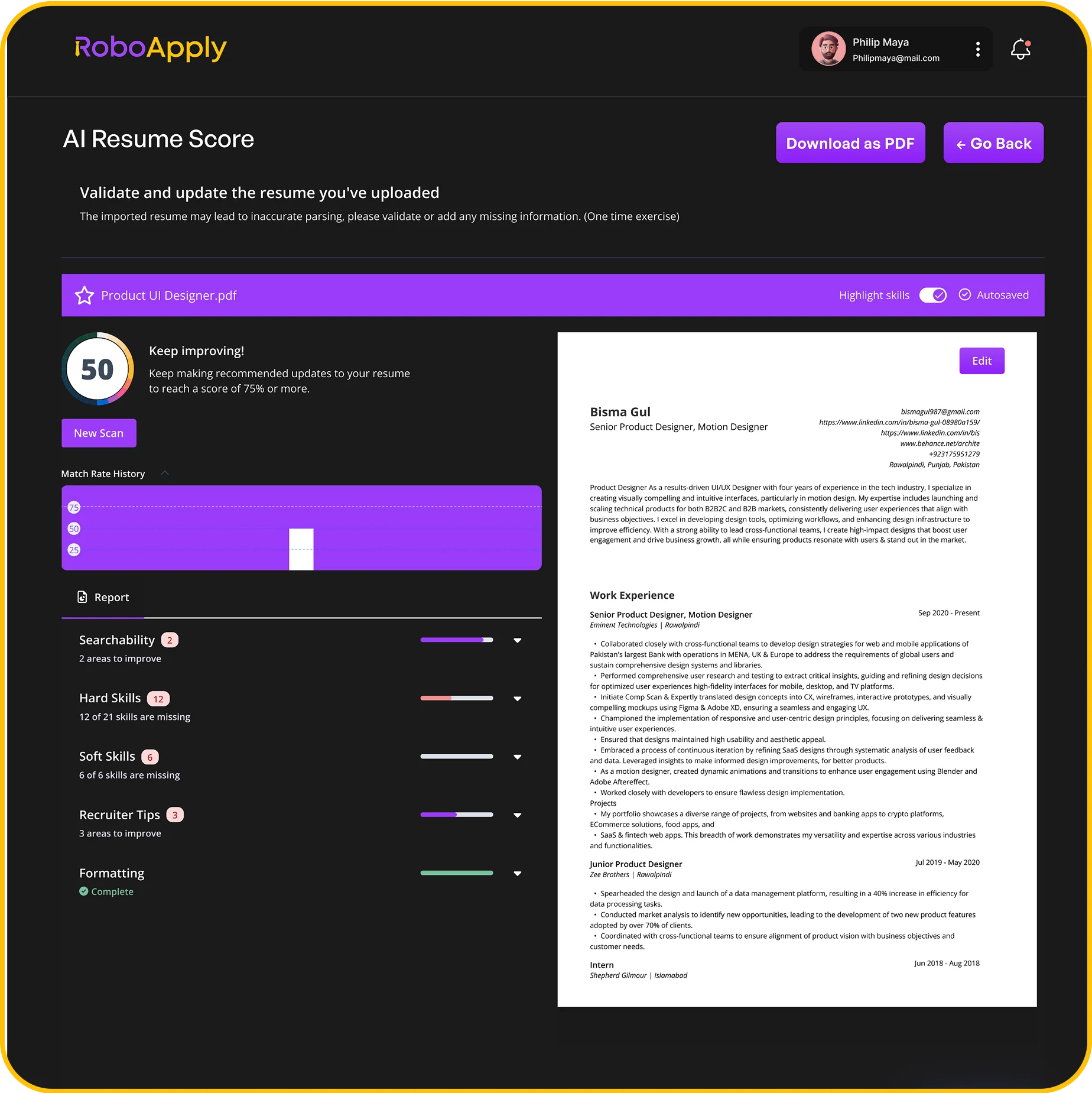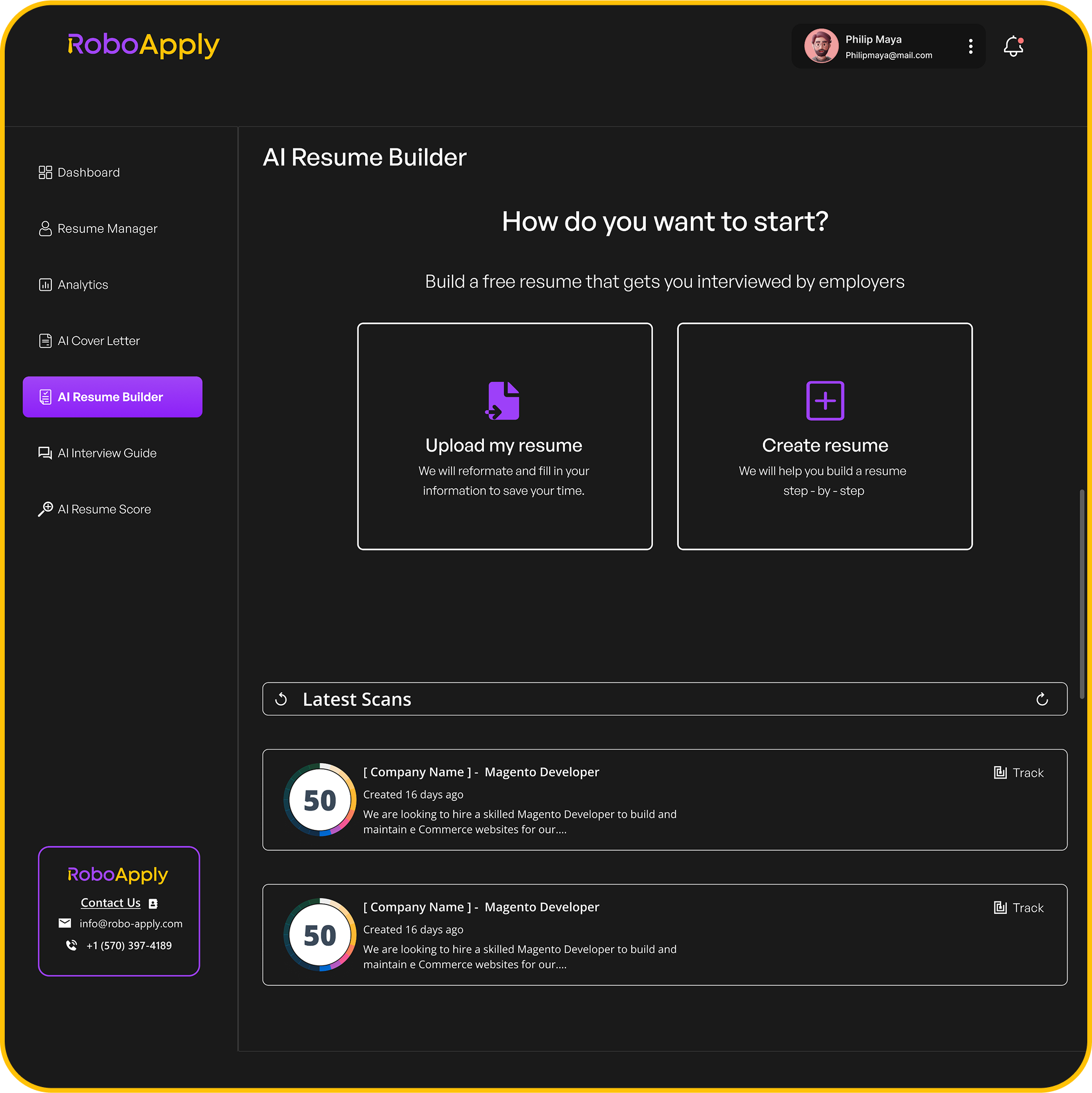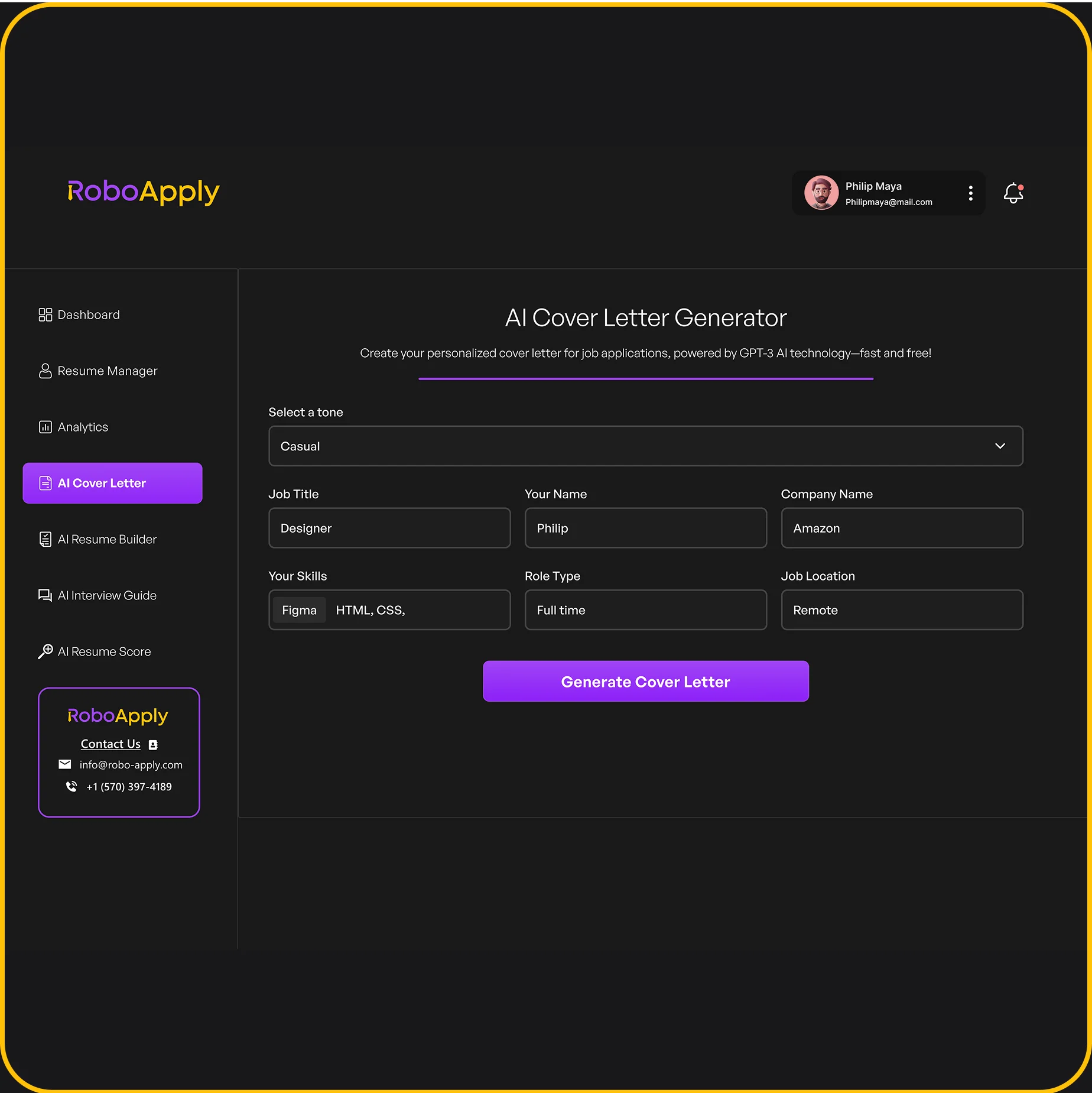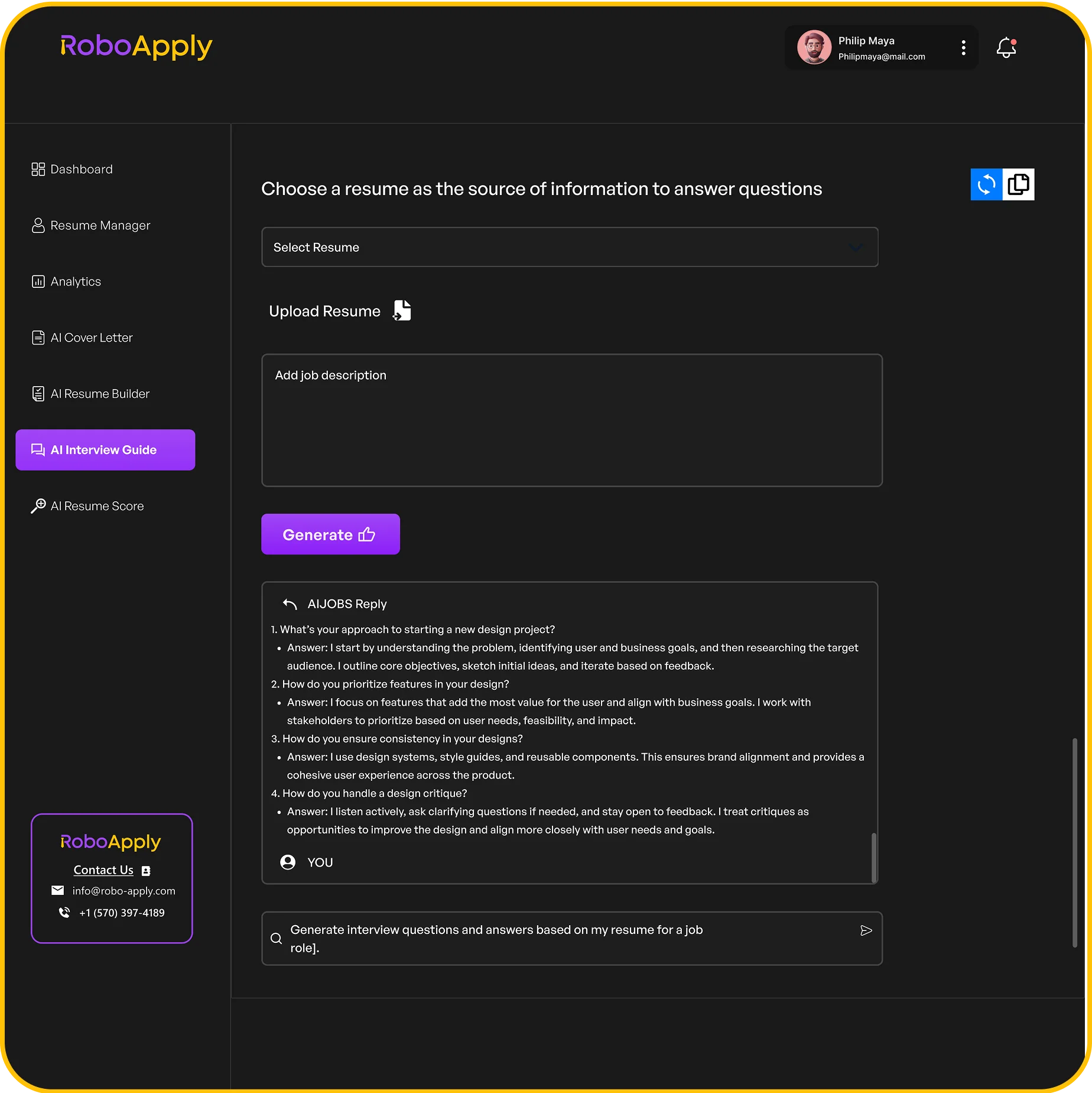So, you’re looking to put together a great Recruitment Manager Resume? It can feel like a big job, right? This guide is here to help you get started, showing you what to put in and how to make it stand out. We’ll go through the main parts of a resume, from your past jobs to your skills, so you can build a strong application for 2025.
Key Takeaways
- Make sure your Recruitment Manager Resume clearly shows your main achievements and what you’re good at right at the top.
- When you talk about your work experience, use numbers and facts to show what you did and how it helped.
- Always list your education and any special training you have that relates to being a Recruitment Manager.
- Highlight skills that are important for a Recruitment Manager, like finding talent, talking to people, and managing projects.
- Think about including any awards or special recognition you’ve received, as this can make your Recruitment Manager Resume even stronger.
1. Resume Summary

A resume summary is your chance to make a killer first impression. It’s a short paragraph, usually 3-4 sentences, that sits at the top of your resume and highlights your most relevant skills, experience, and achievements. Think of it as an elevator pitch for your career. It’s especially important for experienced recruitment managers who have a lot to offer. RoboApply can help you tailor your summary to each job application, making sure you highlight the skills and experience that are most relevant to the specific role.
Think of it as a quick way to show a hiring manager why they should keep reading. A good summary can really make your resume stand out from the pile. It’s your chance to grab their attention right away and show them you’re the right person for the job.
Here’s what a strong resume summary typically includes:
- Years of Experience: Quantify your experience. Instead of saying "Experienced Recruitment Manager," say "8+ years of experience in recruitment."
- Key Skills: Mention 2-3 of your most important skills. These should be skills that are highly relevant to the job you’re applying for. For example, "full-cycle recruiting," "talent acquisition," or "candidate sourcing."
- Achievements: Highlight one or two of your most impressive achievements. Use numbers to show the impact you’ve made. For example, "Reduced time-to-hire by 15%" or "Successfully filled 50+ tech positions."
A well-crafted resume summary is your first and best opportunity to showcase your value to a potential employer. It should be tailored to each specific job application, highlighting the skills and experiences that are most relevant to the role. Don’t just list your responsibilities; focus on your accomplishments and the impact you’ve made in your previous roles.
Here’s an example of a strong resume summary for a Recruitment Manager:
"Results-driven Recruitment Manager with 8+ years of experience in full-cycle tech hiring. Proven ability to source, screen, and secure top talent for fast-growing companies. Expertise in developing and implementing effective recruitment strategies to reduce time-to-hire and improve candidate quality. Skilled in talent acquisition strategies and building strong relationships with hiring managers."
Another example:
"Highly motivated Recruitment Manager with a passion for connecting top talent with innovative organizations. 5+ years of experience in managing the full recruitment lifecycle, from sourcing to onboarding. Adept at building strong relationships with hiring managers and candidates alike. Proven ability to identify and attract top talent through creative sourcing strategies and effective employer branding initiatives. Seeking a challenging role where I can leverage my skills and experience to drive organizational growth."
And one more:
"Experienced Recruitment Manager with a track record of success in building high-performing teams. 7+ years of experience in full-cycle recruitment, with a focus on tech recruitment. Proven ability to develop and implement effective recruitment strategies that align with business objectives. Skilled in candidate sourcing, screening, and interviewing. Passionate about creating a positive candidate experience and building a strong employer brand."
2. Work Experience
Your work experience section is where you really show off what you’ve done. It’s not just about listing your jobs; it’s about showing how you made a difference. Think about using action verbs and quantifiable results to make each bullet point pop. RoboApply can help you tailor these descriptions to match the keywords in the job descriptions you’re targeting, making your resume more appealing to applicant tracking systems (ATS).
Example Format
Here’s a basic format you can adapt:
Company Name, City, State
Job Title, Dates of Employment
- Bullet point highlighting a key achievement with quantifiable results (e.g., "Reduced time-to-hire by 15% through process improvements.")
- Bullet point describing a responsibility and its impact (e.g., "Managed full-cycle recruitment for 50+ positions annually, ensuring a diverse candidate pool.")
- Bullet point showcasing a skill or tool used (e.g., "Utilized applicant tracking systems (ATS) like Taleo and Workday to streamline the hiring process.")
Quantify Your Achievements
Numbers speak louder than words. Instead of saying "Improved recruitment process," say "Reduced time-to-hire by 20% by implementing a new applicant tracking system." Here’s why quantifying matters:
- Shows Impact: It demonstrates the direct effect of your actions.
- Adds Credibility: Numbers are more believable than vague statements.
- Highlights Value: It makes your contributions tangible and measurable.
Tailor to the Job Description
Don’t just copy and paste your work experience from one resume to another. Take the time to tailor each description to match the specific requirements of the job you’re applying for. This is where RoboApply can be a lifesaver, helping you identify the key skills and experiences the employer is looking for and ensuring they’re prominently featured in your resume. For example, if the job description emphasizes diversity and inclusion, make sure to highlight any initiatives you’ve led in that area.
Use Action Verbs
Start each bullet point with a strong action verb to make your descriptions more dynamic and engaging. Here are a few examples:
- Managed
- Developed
- Implemented
- Led
- Coordinated
- Streamlined
- Reduced
- Increased
Focus on Results, Not Just Responsibilities
It’s not enough to simply list your responsibilities. You need to show how you made a difference in each role. What problems did you solve? What improvements did you make? What were the outcomes of your efforts? Think about the "so what?" factor for each bullet point. RoboApply can help you brainstorm ways to frame your experience in terms of results, even if you don’t have hard numbers to back them up.
Remember, your work experience section is your chance to sell yourself to potential employers. Make it count by highlighting your achievements, quantifying your results, and tailoring your descriptions to match the job requirements. A well-crafted work experience section can significantly increase your chances of landing an interview. RoboApply can help you optimize this section to make the best possible impression.
Example Work Experience Entries
Here are a few examples of well-written work experience entries for a Recruitment Manager resume:
Example 1:
ABC Company, New York, NY
Recruitment Manager, 2020 – Present
- Led full-cycle recruitment for all corporate positions, resulting in a 10% reduction in time-to-fill.
- Developed and implemented a new employee referral program, increasing employee referrals by 25%.
- Managed a team of 5 recruiters, providing coaching and mentorship to improve their performance.
Example 2:
XYZ Corporation, Chicago, IL
Senior Recruiter, 2017 – 2020
- Partnered with hiring managers to understand their staffing needs and develop effective recruitment strategies.
- Utilized LinkedIn Recruiter and other sourcing tools to identify and attract top talent.
- Conducted phone screens and in-person interviews to assess candidates’ qualifications and fit.
Example 3:
123 Industries, Los Angeles, CA
Recruitment Coordinator, 2015 – 2017
- Coordinated all aspects of the recruitment process, including scheduling interviews, processing background checks, and preparing offer letters.
- Maintained accurate and up-to-date records in the applicant tracking system (ATS).
- Provided administrative support to the recruitment team.
Remember to tailor these examples to your own experience and the specific requirements of the jobs you’re applying for. Use RoboApply to help you identify the best recruitment strategies and keywords to include in your resume.
3. Education
Your education section is where you list your degrees and any relevant coursework. It’s pretty straightforward, but there are a few things to keep in mind to make it shine. RoboApply can help you tailor this section to match the job description, highlighting the most relevant qualifications.
Education Details
- List your degrees in reverse chronological order, starting with the most recent. Include the full name of the degree, the name of the institution, and the graduation date (or expected graduation date).
- If you have a high GPA (3.5 or higher), you might want to include it. Otherwise, it’s generally best to leave it off.
- Include relevant coursework or specializations if they align with the job requirements. For example, if you’re applying for a role in technical recruiting, mentioning coursework in HR analytics or talent management would be beneficial. RoboApply can help you identify these keywords.
I remember one time, I was helping a friend with their resume, and they had their high school listed above their college degree. It was a simple fix, but it made a huge difference in how polished the resume looked. Always double-check the order!
Example Education Section
Here’s an example of how to format your education section:
Master of Science in Human Resources Management
University of Example, Exampleville, USA
Graduated: May 2023
Bachelor of Arts in Psychology
State University, Stateville, USA
Graduated: May 2021
Tips for a Strong Education Section
- Tailor your education section to the specific job you’re applying for. If a particular course or project is highly relevant, highlight it.
- If you have certifications or licenses, consider creating a separate "Certifications" section to give them more prominence. This is especially useful in fields like healthcare or IT. See how to optimize resumes for various fields.
- If you’re a recent graduate, you can include more details about your academic achievements, such as honors, awards, or relevant extracurricular activities. RoboApply can help you identify which achievements to include based on the job description.
- For experienced professionals, keep the education section concise. Focus on the degree and institution, and only include additional details if they are directly relevant to the job. Make sure your customer service manager resumes are tailored to the job.
What if My Degree Isn’t Directly Related?
Sometimes, you might have a degree in a field that isn’t directly related to the job you’re applying for. In this case, focus on transferable skills and relevant coursework. For example, if you have a degree in English but are applying for a recruiting role, you can highlight your communication, research, and analytical skills. You can also mention any HR-related courses or workshops you’ve completed. Remember to showcase your logistics manager resume skills effectively.
4. Skills
When it comes to your recruitment manager resume, the skills section is super important. It’s where you show off what you’re good at and prove you’ve got what it takes. RoboApply can help you tailor this section to match job descriptions, making sure you highlight the most relevant skills.
Here’s the deal:
- Hard Skills: These are the technical abilities you’ve picked up over time. Think software proficiency, specific recruitment strategies, or knowledge of HR laws.
- Soft Skills: These are your people skills. Communication, leadership, problem-solving – the stuff that makes you good at working with others.
- Transferable Skills: Skills you’ve gained from other jobs that can apply to recruitment. Maybe you were in sales and learned how to persuade people – that’s a big plus!
Here’s a list of skills you might want to include:
- Sourcing Candidates: Finding the right people for the job.
- Interviewing Skills: Knowing how to ask the right questions and assess candidates.
- Communication Skills: Talking to candidates, hiring managers, and your team.
- Negotiation Skills: Getting the best deal for both the company and the candidate.
- HR Knowledge: Understanding employment laws and regulations.
- Applicant Tracking Systems (ATS): Using software to manage applications.
- Data Analysis: Looking at recruitment metrics to improve your process.
- Project Management: Keeping recruitment projects on track.
- Leadership: Guiding your team to success.
- Problem-Solving: Figuring out how to overcome recruitment challenges.
Make sure to tailor your skills section to each job you apply for. Read the job description carefully and highlight the skills that match what they’re looking for. Use keywords from the job description to make sure your resume gets past the ATS. RoboApply can help you identify these keywords and optimize your resume.
Don’t just list your skills – show how you’ve used them. Use action verbs and give specific examples. For example, instead of saying "Communication Skills," say "Effectively communicated with candidates throughout the hiring process, resulting in a 95% candidate satisfaction rate."
Here’s an example of how to format your skills section:
Skills
- Sourcing Candidates: LinkedIn Recruiter, Boolean search, job boards
- Interviewing Skills: Behavioral interviewing, structured interviews, phone screening
- Communication Skills: Written and verbal communication, presentation skills
- Applicant Tracking Systems (ATS): Taleo, Workday, Greenhouse
- Data Analysis: Excel, Google Analytics, HR analytics software
Remember to keep your skills section up-to-date. As you learn new skills, add them to your resume. This will help you stay competitive in the job market and show employers that you’re always learning and growing. You can use this executive manager resume as a guide.
5. Achievements
It’s not enough to just list your responsibilities; you need to show what you actually achieved. Quantifiable results are key here. Think about how you made a difference in your previous roles. Did you improve efficiency, reduce costs, or increase employee satisfaction? These are the kinds of things that hiring managers want to see. RoboApply can help you identify and quantify your achievements by analyzing your past performance data and suggesting relevant metrics to include in your resume.
Here’s how you can structure your achievements section:
- Quantify your impact: Use numbers and percentages to demonstrate the scale of your achievements. For example, instead of saying "Improved employee retention," say "Improved employee retention by 15% in Q2 2024."
- Focus on results: Highlight the outcomes of your actions. What was the impact on the company’s bottom line, employee morale, or overall efficiency?
- Use action verbs: Start each achievement with a strong action verb to showcase your initiative and drive. Examples include "Led," "Managed," "Developed," "Implemented," and "Achieved."
Think of your achievements section as your chance to brag (humbly, of course) about your accomplishments. It’s where you can really sell yourself and show hiring managers why you’re the best candidate for the job. Don’t be afraid to highlight your successes and quantify your impact whenever possible.
Here are some examples of achievements you might include:
- Reduced time-to-fill by 20% through process improvements.
- Increased candidate satisfaction scores by 15% through improved communication.
- Successfully filled 50+ open positions in a high-volume recruitment environment.
- Improved feedback by 35% demonstrating a strong ability to drive results.
- Decreased cost-per-hire by 10% through effective sourcing strategies.
- Free recruiter resume examples are available to help job seekers create impressive resumes.
- Expanded candidate pools by 45% and decreased cost-per-hire by $2,300. Developed comprehensive DEI sourcing strategies. DEI sourcing strategies.
6. Certifications
Okay, so certifications. These are basically gold stars that show you know your stuff. Listing relevant certifications on your resume can really make you stand out, especially in a competitive field like recruitment. It tells employers you’ve taken the time to get formally trained and validated in specific areas. RoboApply can help you tailor your resume to highlight the certifications that match the job description.
Examples of Recruitment-Related Certifications
Here are a few certifications that could boost your resume:
- Certified Internet Recruiter (CIR): This shows you’re skilled in online sourcing and recruiting techniques.
- Professional in Human Resources (PHR) or Senior Professional in Human Resources (SPHR): These are broader HR certifications, but they demonstrate a solid understanding of HR principles, which is super relevant to recruitment.
- SHRM Certified Professional (SHRM-CP) or SHRM Senior Certified Professional (SHRM-SCP): Similar to PHR/SPHR, but offered by SHRM. Again, great for showing overall HR knowledge.
- AIRS Certifications: AIRS offers a range of certifications focused on different aspects of recruiting, like sourcing, diversity recruiting, and social media recruiting.
How to List Certifications
Keep it simple and clear. Here’s a good way to format them:
- Certification Name
- Issuing Organization
- Date of Certification (or Expected Completion Date)
- (Optional) Certification Number
For example:
Certified Internet Recruiter (CIR)
Internet Recruiting Training Center
Certified: March 2023
Why Certifications Matter
Certifications can be a game-changer. They not only validate your skills but also show your commitment to professional development. In a field where best practices are constantly evolving, having certifications demonstrates that you’re staying current and investing in your career. Plus, some companies might even require specific certifications for certain recruitment roles.
Don’t just list them; make sure they’re relevant to the jobs you’re applying for. If a job description mentions needing experience with a specific applicant tracking system (ATS), and you have a certification related to that ATS, definitely highlight it! Use resume examples to see how others have done it.
7. Awards
Awards can really make your resume pop, especially if they’re relevant to the recruitment field. It shows you’ve gone above and beyond, and someone recognized that. Don’t just list them; give a tiny bit of context so the reader understands why it matters.
Here’s the thing: not all awards are created equal. A "Perfect Attendance" award from high school probably isn’t going to impress anyone. Focus on awards that demonstrate your skills, leadership, or impact in recruitment.
Here’s a few things to keep in mind:
- Relevance is key: Only include awards that relate to your career or the job you’re applying for. A "Best Chili Cook" award, while impressive, probably isn’t relevant.
- Context matters: Briefly explain why you received the award. What did you do to earn it? What impact did it have?
- Be specific: Instead of "Employee of the Month," try "Employee of the Month – Increased Hiring Efficiency by 15%."
Awards are a great way to show, not just tell, that you’re good at what you do. They provide concrete evidence of your achievements and can help you stand out from other candidates. RoboApply can help you tailor your resume to highlight these achievements effectively.
Here’s an example:
Recruitment Excellence Award
Awarded by: HR Leadership Council, 2024
Recognized for: Implementing a new applicant tracking system that reduced time-to-hire by 22% and improved candidate satisfaction scores.
Another example:
Top Recruiter Award
Awarded by: Acme Corp, 2023
Recognized for: Successfully filling 50+ critical roles within the fiscal year, contributing to a 10% increase in overall company productivity.
And one more:
Innovation in Recruitment Award
Awarded by: Society for Human Resource Management (SHRM), 2022
Recognized for: Developing and implementing a diversity and inclusion recruitment strategy that increased minority representation by 18% within one year.
8. Volunteer Work
Volunteer work? Yeah, it’s not just for feeling good (though that’s a nice bonus). It can seriously boost your resume, especially if you’re light on paid experience. Think of it as a chance to show off skills and passions that might not come across in your regular work history. Plus, it tells recruiters you’re a well-rounded person. RoboApply can help you tailor your resume to highlight these experiences effectively.
Including volunteer experience shows initiative and a willingness to contribute to something bigger than yourself. It can also demonstrate soft skills like teamwork, communication, and problem-solving.
Here’s how to make the most of it:
- Treat it like a job. Use action verbs and quantify your impact whenever possible. Instead of "Helped at a soup kitchen," try "Served an average of 50 meals per week to individuals in need."
- Focus on relevant experiences. If you’re applying for a management role, highlight any leadership positions you held in your volunteer work.
- Don’t be afraid to include older experiences. Even if it was years ago, relevant volunteer work can still add value to your resume. You can use volunteer work on a resume to highlight your skills.
Here’s a simple example:
Volunteer Experience
Habitat for Humanity, Construction Volunteer | Summer 2023
- Assisted in the construction of three homes for low-income families.
- Collaborated with a team of 10 volunteers to complete projects on time and within budget.
- Learned and applied basic carpentry skills, contributing to the overall quality of the builds.
Local Animal Shelter, Dog Walker | 2022 – Present
- Provided daily exercise and socialization for shelter dogs.
- Assisted with cleaning and maintaining kennel areas.
- Helped organize adoption events, resulting in a 15% increase in adoptions.
Remember, even seemingly small volunteer roles can demonstrate valuable skills and qualities. Make sure to tailor your descriptions to match the requirements of the facility manager resumes you’re applying for. And don’t forget to craft a compelling volunteer cover letter to really sell your experience!
9. Publications
Some recruitment managers are also active in their field, publishing articles or contributing to industry publications. If you’ve done this, it’s a great way to show your expertise and commitment. It’s another way to stand out from the crowd, especially if the publications are well-regarded in the HR world. RoboApply can help you tailor your resume to highlight these achievements, ensuring they catch the eye of potential employers.
Including publications can significantly boost your credibility.
Here’s how you might format it:
- Author, A. A., Author, B. B., & Author, C. C. (Year). Title of article. Title of Journal, Volume(Issue), Pages.
- Author, D. D. (Year). Title of book. Publisher.
- Author, E. E. (Year, Month Day). Title of blog post. Title of Blog. Retrieved from URL.
If you have a long list of publications, consider only including the most relevant or prestigious ones. Quality over quantity is key here. Think about what will impress the hiring manager most and align with the IT director role you’re seeking.
It’s also a good idea to briefly describe your role in the publication, especially if it wasn’t as the primary author. Did you contribute research, editing, or something else? This context can add weight to your entry. If you’re looking for a marketing director resume example, you’ll see how they highlight publications to showcase their industry knowledge.
Remember to keep the formatting consistent with the rest of your resume. Use the same font, spacing, and style to maintain a professional look. And, of course, proofread carefully to catch any errors. You can also check out some resume examples to see how others have formatted their publications section.
10. References
It’s pretty standard these days not to include references directly on your resume. Instead, you usually provide them upon request. But, it’s still a good idea to have a reference list ready to go. Think of it as a separate document you can send over when an employer asks for it. RoboApply can help you keep track of your references and tailor them to each job application.
Here’s what you should include on your reference sheet:
- Your full name and contact information at the top.
- Each reference’s full name, job title, and company.
- Their contact information (phone number and email address).
- A brief note about your relationship with them and how they know your work.
Having a prepared reference list shows you’re organized and ready to move forward in the hiring process. It also gives you a chance to give your references a heads-up that they might be contacted.
It’s also smart to keep your references in the loop about the jobs you’re applying for. That way, they can tailor their recommendations to the specific role. You can use RoboApply to track your job applications and easily share updates with your references.
Always ask for permission before listing someone as a reference. It’s just common courtesy, and it ensures they’re prepared to speak about you positively. Plus, it avoids any awkward surprises for them.
Here’s a simple example of how to format a resume reference list:
Your Name
Your Phone Number | Your Email
References
John Doe
Project Manager, Acme Corp
(555) 123-4567 | john.doe@example.com
John was my supervisor on the Alpha Project. He can speak to my project management and communication skills.
Jane Smith
Team Lead, Beta Industries
(555) 987-6543 | jane.smith@example.com
Jane was a colleague of mine at Beta Industries. She can attest to my teamwork and problem-solving abilities.
Robert Jones
Professor, University X
(555) 111-2222 | robert.jones@example.edu
Robert was my professor for several marketing courses. He can speak to my knowledge of marketing principles and my work ethic.
Remember to keep your references updated and informed. A little preparation can go a long way in making a strong impression on potential employers.
Want to make your job search easier? Our special tool can help you apply for jobs super fast. It even helps with your resume and cover letter. Check out our website to see how you can get hired quicker!
Wrapping Things Up
So, there you have it. Putting together a good resume for a recruitment manager job might seem like a lot, but it’s really about showing what you can do. Think about what makes you stand out. Did you help a company find a lot of great people? Did you make the hiring process better? Those are the kinds of things to put in. Make sure your resume is easy to read and gets straight to the point. A clear, simple resume that highlights your wins is what will get you noticed. Keep it focused, and you’ll be in good shape.
Frequently Asked Questions
What makes a recruitment manager resume stand out?
A good resume for a recruitment manager should be easy to read and show off your best skills and experiences. It should make it clear that you can find and hire the right people for a company.
What sections should I include in my resume?
You should put your contact information, a short summary of your skills, your work history, education, and any special skills or awards. Think of it like telling your career story in a clear way.
How do I describe my work experience effectively?
Start with your most recent job and work backward. For each job, list your main duties and, most importantly, what you achieved. For example, instead of saying ‘managed hiring,’ say ‘hired 50 new employees in six months, cutting hiring time by 20%.’
What kind of skills should I highlight?
Focus on skills that are important for a recruitment manager. These include talking to people, solving problems, leading teams, and using hiring software like RoboApply. Show that you’re good at finding talent.
How long should a recruitment manager’s resume be?
Keep your resume to one or two pages. Hiring managers are busy, so make sure every word counts. Only include information that helps show you’re the best person for the job.
Should I customize my resume for each job application?
Yes, it’s a good idea to change your resume a little bit for each job you apply for. Read the job description carefully and make sure your resume shows how your skills and experience match what they’re looking for.
Do I need to include references on my resume?
You don’t usually need to include references directly on your resume. Instead, you can say ‘References available upon request.’ This means you’ll provide them if the employer asks for them later.
What are some good action verbs to use?
You can use strong action words like ‘managed,’ ‘developed,’ ‘led,’ ‘achieved,’ and ‘improved.’ These words make your accomplishments sound more impressive and show what you can do.










